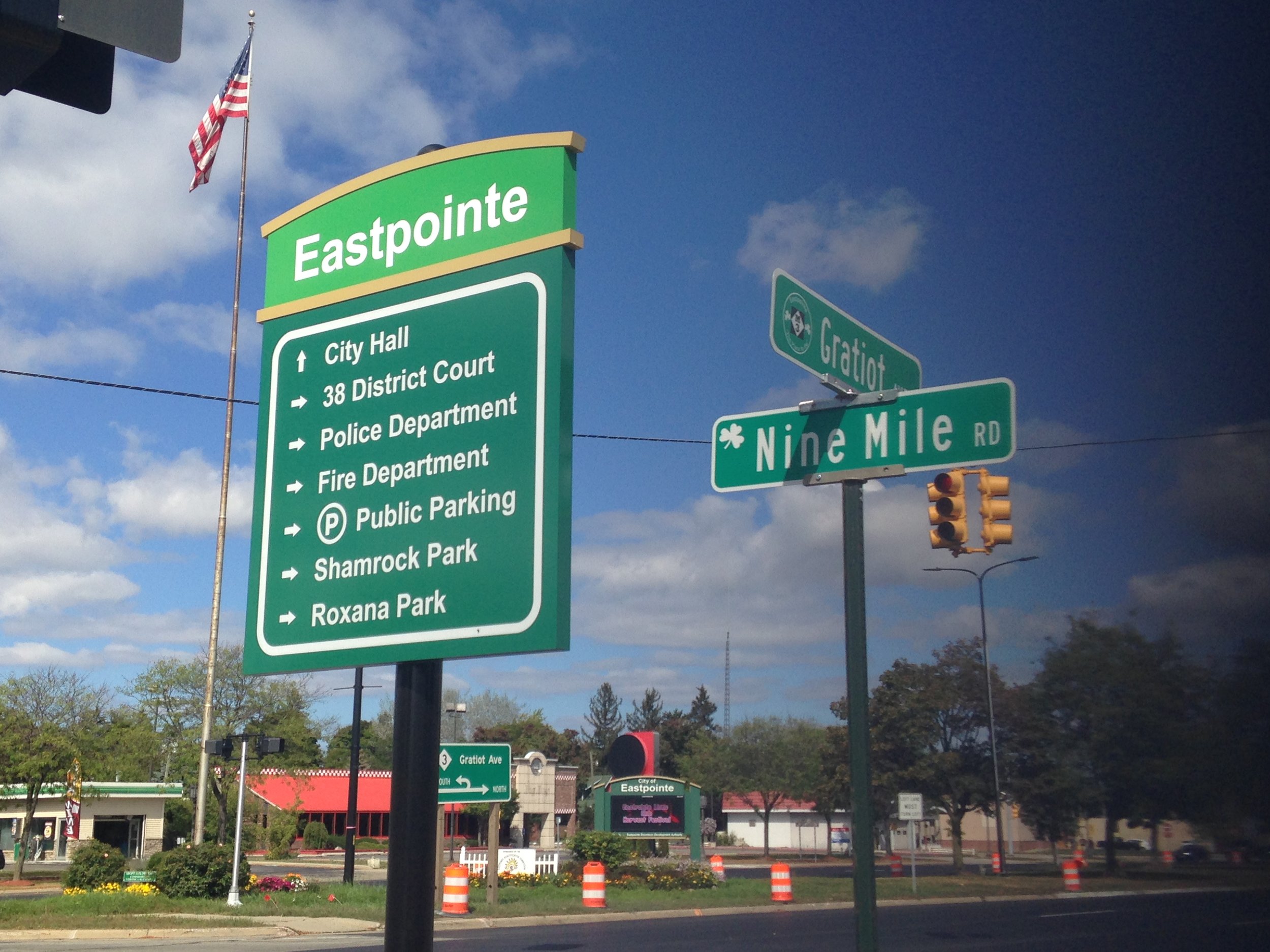Gratiot Avenue
September 30, 2017
Gratiot Avenue was named for Fort Gratiot, which itself was named after the military engineer who supervised the construction of the fort in 1814, Captain Charles C. Gratiot. I started again at Hart Plaza, left downtown behind, and entered a vast wide stretch of occasional storefronts. Some were intact, others in various states of brokenness.
A former diner sported mysterious signage stating “Asian Corned Beef,” but I couldn’t investigate since it was closed. Soon afterwards, another store called Asian Fisheries was open, so I had to go in. The African American proprietor's story was that his father used to work for an Asian woman, and when he bought the business, he asked her permission to name it Asian Fisheries. It didn't quite make sense to me, but I nodded. The proprietor added that sometimes customers came in with preconceived notions about the business because of the name. He pronounced it racism, and I nodded at that too. In return for his congeniality, I bought a half pound of deep fried catfish. It was delicious.
I had invited others to join me on this walk, and one person found me for an hour in the middle of the day. She had asked which part of the walk would be most interesting, and I had replied that it would be the first three hours in the city. Then I caught myself. Why would the relative desolation of the city be more "interesting" than the blandness of the suburbs? Was I reproducing the colonizing gaze of "ruin porn"? In any case, she joined me at the border from the city to the suburbs, and was mildly disappointed that the transition wasn't more dramatic. As a Canadian and newcomer to Detroit, she had many questions about the city, a few of which I could answer and many that I couldn't. I discovered that I walked differently with another person, matching my gait to hers. When she left to go about the rest of her day, the ease with which she called an Uber to return to her parked car reminded me again of the contrast of these epic walks to daily conveniences.
One thing that struck me on Gratiot was the number of auto-related businesses: new car dealers, used car dealers, body shops, auto parts stores, car washes. Given the reign of the car industry in Detroit, that made sense. I'd been told that the Detroit metro region had the most bowling alleys per capita in the nation, and wondered whether that was true for auto-related businesses as well. I also wondered whether their distribution across the city and suburbs was as unequal as it was for bowling alleys, of which there are 110 in the suburbs, and 2 in the city.
When I reached Mount Clemens, it was obvious that it had been a separate village before it got swallowed up by urban sprawl. The small bungalows and picturesque downtown contrasted markedly with the previous big box suburban landscape. From some of the housing structures and the reappearance of pawnshops, it was also obvious that there were pockets of poor and working class residents here.
Past the town came the outer edge of sprawl. The sidewalks came in and out, with stretches of trampled earth in the grass linking paved sections. My feet hurt, and the relief I felt at a McDonalds break near the endpoint almost made me call my friend to pick me up right there, but I kept going and made it to my destination just as the sun started setting.
Sources:
George Galster. Driving Detroit: The Quest for Respect in the Motor City. University of Pennsylvania Press, 2012.
http://detroiturbanism.blogspot.com/2016/10/radial-avenues-part-iv-gratiot.html











